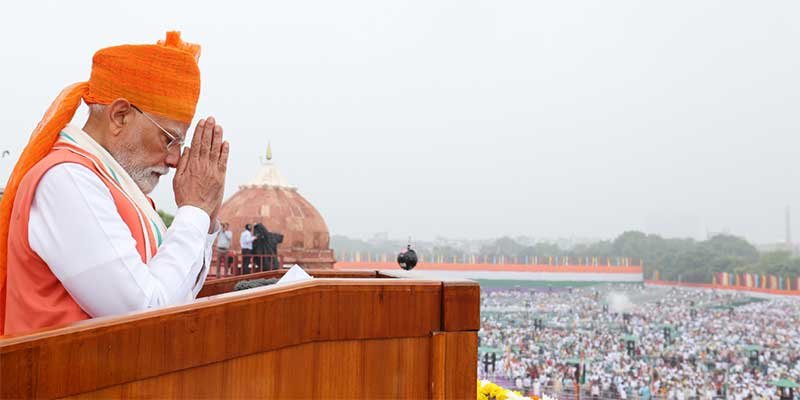PM Modi Unveils Next-Generation GST Reforms: Three-Pillar Plan for Inclusive Growth and Ease of Living
These reforms aim to simplify the tax system, enhance affordability, strengthen industries, and stimulate overall economic growth.

NEW DELHI- Prime Minister Narendra Modi, in his address to the nation on the 79th Independence Day, described the Goods and Services Tax (GST) as one of the most transformative reforms in India’s economic history and announced a bold new agenda for its next phase of evolution.
Framing the GST reforms as central to the vision of Atmanirbhar Bharat, the Prime Minister said the government’s proposals rest on three foundational pillars — structural reforms, rate rationalisation, and ease of living. These reforms aim to simplify the tax system, enhance affordability, strengthen industries, and stimulate overall economic growth.
The proposals have been formally shared with the Group of Ministers (GoM) constituted by the GST Council, and the Centre plans to work closely with all states to build consensus before implementation.
Three Pillars of the Reform Plan
- Structural Reforms
- Correction of Inverted Duty Structures – Align input and output tax rates to reduce the accumulation of input tax credit, encouraging domestic manufacturing and value addition.
- Resolving Classification Disputes – Streamline and clarify GST rate classifications to minimise disputes, simplify compliance, and ensure fairness across sectors.
- Policy Stability and Predictability – Provide long-term clarity on GST rates to strengthen industry confidence and facilitate better business planning.
Also Read- Supreme Court-Ordered EVM Recount Overturns Haryana Panchayat Election Result
- Rate Rationalisation
- Lower Taxes on Essentials and Aspirational Goods – Reduce GST rates on items used by the common man, women, students, farmers, and the middle class.
- Simplified Structure – Move towards a two-slab GST system — standard and merit — with special rates only for specific goods.
- Post-Compensation Cess Adjustments – With the end of the GST compensation cess, the government aims to realign rates for greater efficiency and sustainability.
Also Read- Supreme Court Orders ECI to Publish List of 65 Lakh Deleted Voters in Bihar, Demands Transparency
- Ease of Living
- Simplified Registration – Technology-driven, quick, and hassle-free GST registration, especially for small businesses and startups.
- Pre-Filled Returns – Reduce manual effort and errors through auto-filled GST returns.
- Faster Refunds – Automated, technology-enabled refund processing for exporters and sectors facing inverted duty structures.
Impact and Vision
PM Modi said these reforms will benefit all sections of society, particularly the common man, small businesses, and MSMEs. They are expected to reduce compliance burdens, enhance affordability, stimulate consumption, and boost sectoral growth.
The GST Council is expected to deliberate on the GoM’s recommendations in its upcoming meeting, with the government aiming for early implementation within the current financial year.
“These next-generation GST reforms will make India’s tax system simpler, stable, and transparent — empowering people, strengthening the economy, and promoting inclusive growth,” the Prime Minister declared.









